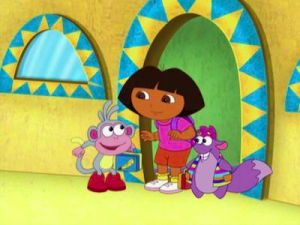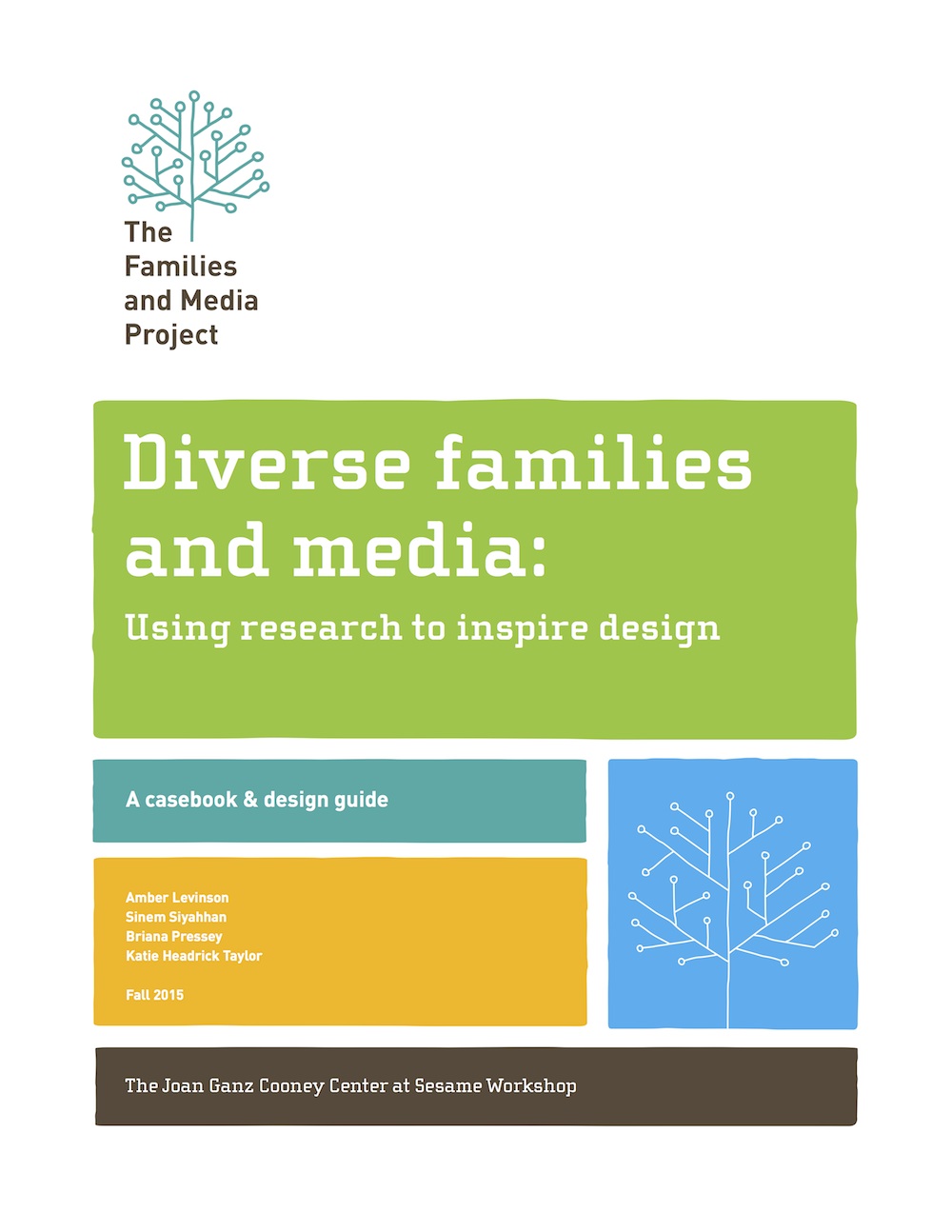Two of the leading researchers involved with preschool television program Dora the Explorer, Head of Education Research Mariana Díaz-Wionczek and Creative/Cultural Advisor Carlos Cortés, describe how the show evolved from merely featuring a Latina character to intentionally teaching Spanish, highlighting dual language capabilities, and promoting Latino culture.
It was the early 2000s when Carlos Cortés, professor (now emeritus) at UC Riverside, and Mariana Díaz Wionczek, researcher, joined the production team of the fledgling series Dora the Explorer. At that time, these two key contributors to the Dora programs—which also included Go Diego Go and Dora and Friends—could not have imagined the “crossover” phenomenon that the shows would become and the impact they would have on millions of children and families during their 15 years of production. Cortés, who advised the Dora team from the first season in 2000, and Díaz-Wionczek, who joined after the third season, each trace a long arc with the program and reflect on many changes–in the show, the characters, and in the world around them.
A movement to showcase the value of dual language
Díaz-Wionczek recalls that when her work with Dora began, one of the major changes she spearheaded was to incorporate more Spanish and create greater equality between the languages and the characters who speak them. When she joined the team, the show had already aired for three seasons and was ripe for more development. “At that time the show was really successful and because of that success we had an opportunity to revisit the curriculum and make it better, or just more challenging overall,” she remembers. “One of the areas we identified that had a lot of potential for change and improvement was Spanish.”
The decision to focus on Spanish language in the curriculum was based in the research Díaz-Wionczek and colleagues were conducting on each and every episode with children in classrooms. Perhaps contrary to expectations, they found that children were eager to speak in a language they may not already know. “When we were testing the content of the episodes in the field, the kids were really willing and wanting to try to speak a second language, in this case Spanish,” recalls Díaz-Wionczek. “They had no problem to say a combination of words or a full phrase. That was a key piece [in our decision] to push the bar a bit.”
These findings, and the continued success of Dora, led the team to deepen the show’s connection to Spanish and Latino culture. “When you start a show, you don’t know it’s going to be a great success. Many shows aren’t,” reflects Cortés. At first, the team’s goals centered around creating a show that was entertaining and that addressed Howard Gardner’s multiple intelligences (which include visual, auditory, kinesthetic, and other ways of learning), and Latino culture was less of a primary ingredient. However, by the fourth season of Dora, Cortés recalls, “we were more intentional about culture, more intentional about language learning, and about the symbolic meaning of [characters] Boots and Tico and how they functioned as an English learner and a Spanish learner.”
In order to achieve their goals, Díaz-Wionczek and the team consulted with dual immersion educators in order to explore how the show might model a more bidirectional approach to language learning. In the first few seasons, Dora had acted as the main mediator between English-speaking and Spanish-speaking characters. The team now began to focus on creating an environment in which English- and Spanish-speakers were learning from one another.

The “First Day of School” episode was the first to really highlight the new language strategy—it contained much more Spanish than previous episodes, and the content tested well with children. A key representation of the show’s new language approach is the pair of characters, Boots and Tico. Boots, a monkey, is a monolingual English speaker, while the squirrel Tico is a monolingual Spanish speaker. Dora helps to bridge understanding between speakers of different languages in the show.
The 15 years of Dora’s production also saw changes in how families in the U.S. view dual language abilities and the desirability of language immersion approaches—in part due to a growing body of research showing the cognitive benefits of learning more than one language. Díaz-Wionczek and Cortés argue that Dora too was part of this shift in how society views bilingualism.
Growing phenomenon, growing responsibility
Dora’s popularity also created a strong sense of responsibility to present a positive and just portrayal of bilinguals that showcased their skills and strengths. “[Dora’s] resolution of problems comes from her dual culture and dual language abilities. She can do it because she can cross over. We made more of the episodes focus on the dimension,” explains Cortés.
As part of creating a more equitable portrayal, the producers also shifted the characters’ language abilities over time. At first, Boots was learning Spanish as a result of his interactions with other characters in the show, but Spanish-speaking Tico was not learning any English. The team felt that this was unfair and a poor representation of the abilities of Spanish speakers, and made changes such that Tico began learning English as well.
The research team also found that over time, children’s reactions to Dora’s bilingual capabilities changed in positive ways. In the early days of research, the team found that children wanted to speak the words Dora was saying. After time though, they found that many children showed a new pride in language abilities, particularly the Spanish-speaking children. “The world has transformed to being more accepting of a second language,” Díaz-Wionczek suggests. “Dora was part of that transformation to aspire to second language.” They also found that Hispanic-Latino parents were increasingly using Dora to infuse Spanish language and Latino culture at home, and that English-speaking families were becoming interested in doing the same, even if they had no Hispanic-Latino heritage.
“When I give a lecture I’ll have at least one person in the audience who says how much Dora has meant to them,” says Cortés. “There was a disappearance of embarrassment. Dora made it okay. Non-Spanish-speaking parents were taking pride in their kids learning Spanish from Dora.”
Challenges and New Frontiers
The biggest challenge in the 15 years of creating the show was how to keep the content fresh and exciting. The structure of the show, which was based on Howard Gardner’s theory of multiple intelligences, provided guidance for the show’s writers, but could also sometimes be confining. To address this, the team created different themes for each season, such as health and wellness, or conserving the environment.
A second challenge was to create a “pan-Latino” identity that would reflect the diverse Hispanic-Latino population and allow viewers from a variety of backgrounds to feel represented. Although some argued for giving Dora a specific nationality or background, the team ultimately decided to keep it unspecified. Cortés was a strong advocate for this approach, and feels it was a good decision. The Spanish language used in the show was also chosen to be familiar to all Spanish-speakers, which can be challenging given the myriad regional variations. While making sure Dora’s character and language were accessible to a wide Hispanic-Latino audience, the team strove to promote diversity. “Diversity has to be cherished, not watered down,” says Cortés.
Toward the end of its 15 years in production, Dora also encountered challenges. Díaz-Wionczek attributes the decline at least in part to changes in the show itself, including aspects of the Dora and Friends spinoff, as well as changes in the children’s media landscape overall. Dora and Friends presented the Dora character as an older child, with a different cast of characters. “It was not totally the right fit for the audience,” Díaz-Wionczek suggests. However, a fundamental upset to the program was the advent of mobile media and the proliferation of many high quality children’s programs. “There are many high quality choices. For a long time, the choice was Dora,” says Díaz-Wionczek. “Now there are other quality products that are like Dora. Kids are watching multiple things,” ultimately making it more difficult for Dora to attract as large a share of the market.
Both Díaz-Wionczek and Cortés mourn the end of Dora’s production and the diverse, open-minded team they collaborated with and describe as truly unique. They also see some positive changes in the ongoing trends of children’s media. When asked what is still missing in children’s media today, Díaz-Wionczek suggests multicultural characters are still under-represented, but that is changing. “Sometimes you see multicultural cast, but they are in a box,” she observes. “Now I see it happening less. They are more multidimensional.”
As the first “Dora generation” graduates from high school, the Dora creators have questions about long-term impacts they would love to answer. “We don’t know… is their exposure to Dora having some lifelong effect?” wonders Cortés. “We are waiting to see what the message will be as they become adults.”

